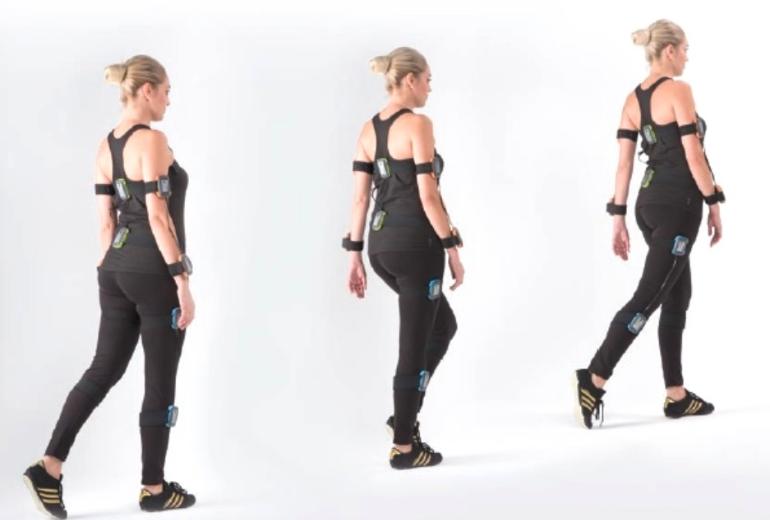The assessment of movements (screening) is now experiencing a boom, which, according to the author of the article, is not associated with the practical benefits that this procedure can bring, but with the desire to profit from it, to get money for the assessment itself and for the right to conduct it – the good old American custom. This is a kind of certification syndrome. The number of certificates is growing, one more ridiculous than the other, trying to patent the simplest ideas. Meanwhile, coaches, even a hundred years before the screening, successfully assessed the condition of their wards, this is called observational practice.
Actually, the assessment of movements is the observation of them. An experienced coach will always notice if an athlete stumbles during warm-up or has spent too much time on the ground and looks lethargic if he is not running as confidently as usual. The coach takes all this into account and makes adjustments to the training. The flaws are especially clearly revealed during the warm-up – this is an excellent observation tool.
But what is wrong with doing one more, standard check before reaching a conclusion? What is wrong with scoring how an athlete performs a series of movements?
The bad news, according to Magness, is that screening completely replaces the intuitive assessment with the formal one. Instead of observing the natural, dynamic process in which athletes perform the movements they are prepared for, they, the athletes, are asked to perform a series of predetermined, artificial movements. When a coach observes an athlete, he is simply observing, and during the screening, he looks for problems that need to be corrected.
This small mental shift has serious consequences. A classic example is the study by Dr. James Andrews, who sent 31 pitchers (baseball pitchers) for an MRI of the shoulder girdle. All athletes were healthy and did not complain about anything, but in 27 of them, MRI revealed damage to the rotator cuff of the shoulder and in 28 – changes in the cartilage of the shoulder joint. When a person looks for a problem, he finds it. A person who comes for an examination will not leave without a diagnosis.
From a coach’s point of view
There is a small but key difference between observation and screening. Experts usually draw on their own experience. They have seen thousands of times how an athlete performs some kind of exercise, and if suddenly there is a hitch, they will immediately spot it. Or they watched hundreds of athletes do the same thing and noted patterns. Extensive experience allows an experienced coach to intuitively make decisions, and then mentally assess how correct they are.
Magness refers to the researcher Gary Klein, who defines intuition as a combination of intuition with some kind of inexpressible knowledge. This is not knowledge of any specific facts, so it cannot be passed on to anyone, just like you cannot share your perception or ability to recognize faces. Klein illustrates his point by discussing the refereeing of Olympic diving competitions. The referee or TV commentator may notice that the splash was too big because the jumper spread his ankles. The viewer, sitting at home in front of the TV, does not notice either the magnitude of the splash or the slight spreading of the ankles until the TV people show the jump in large and slow motion. Only an expert can notice an error at the moment of its commission, and he does not need any slow-motion video for this. Only intuition and experience.
This is not how screening works. It requires a structured formal analysis of certain movements, measuring the angle of the arm X and the position of the foot Y. Accurate knowledge is certainly needed, but Steve Magness fears that by becoming overly dependent on such checks, we will lose the ability to rely on our intuition, and instead become slaves of indicators X, Y and Z. In this case, it is not the movement that becomes of paramount importance, but its formal assessment.

From an athlete’s point of view
The athlete can also assess their movements consciously and unconsciously. During testing, attention is paid to how the athlete participates in movement. This is a deliberate action. When an experienced sprinter performs dynamic warm-up exercises, he or she does them unconsciously. His body itself knows what to do, the athlete does not think over every movement in stages. (How can you not remember the centipede, which was asked to move consciously).
If an athlete in training suddenly does something wrong, this is a signal of trouble. The movements are so “rooted” in the body of the athlete that he cannot perform them incorrectly by mistake. Deviation in this case is not a sign of error, but of trouble.
The movements that are tested during the screening, as a rule, differ from the usual actions of the athlete, and the effect of training in this case does not matter.
Rather than observing an athlete’s movement in habitual movements and using deviations from this pattern as indicators of weakness or fatigue, testing proceeds from the principle that any movement performed in the gym is somehow related to what is done on the field. In other words, the error can be confused with the problem.
In fact, athletes’ problems with testing are the same as those of schoolchildren: the score obtained may not correspond to the real state of affairs.
Now what?
Does this mean that functional assessment of movement is useless and should be canceled? Of course not. Do not throw out the baby with the water. Testing done correctly can show how an athlete moves when performing different tasks. The question is, does screening deserve such a stir, will it help, for example, reduce injuries?
Perhaps instead of codifying all movements, it would be better to observe the real movements of athletes and create an observation bank that would facilitate the work of the “pattern recognition program” in our brain.
Testing in its purest form inclines towards robotic thinking: “The scores are poor on test X, theref
ore, there is a problem that requires rehabilitation Y”. However, our body does not work like that, it is a complex self-organizing system that requires a variety of approaches. It would be helpful to build testing into the observing system, while avoiding linear thinking. In general, you need to find the right place for him.
Attention is one of the best products we can offer and is highly regarded in today’s society. Therefore, coaches, keep a close eye on your athletes from start to finish. Find out what their psychological, metabolic and mechanical problems are and find a solution. Knowledge will tell you more than any test.


